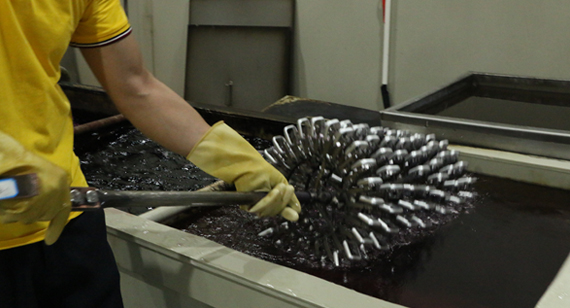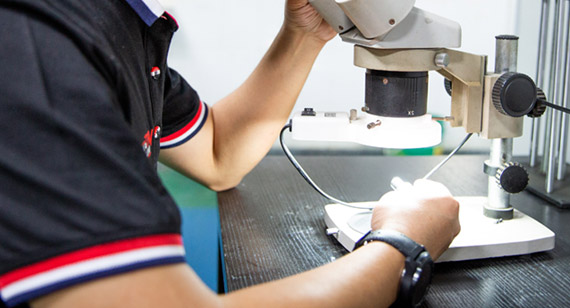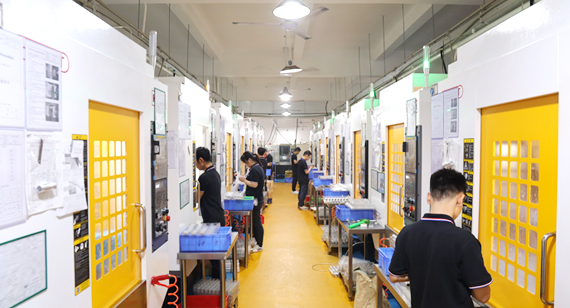15 years one-stop China custom CNC machining parts factory

Hey there I’m VMT Sam!
With 25 years of CNC machining experience we are committed to helping clients overcome 10000 complex part-processing challenges all to contribute to a better life through intelligent manufacturing. Contact us now
 153 |
Published by VMT at Nov 20 2023
153 |
Published by VMT at Nov 20 2023
What is Oxide Layer Thickness?
The oxide layer thickness refers to the measurement of the depth or extent of the oxide layer that forms on the surface of a material due to the process of oxidation. Oxidation is a chemical reaction in which a substance reacts with oxygen, leading to the formation of an oxide layer.
In the context of metals like aluminum, the oxide layer is commonly known as aluminum oxide or alumina. This oxide layer forms naturally on the surface of aluminum when exposed to oxygen in the air. The thickness of the oxide layer is a critical parameter that can impact the material's properties and performance.

Key Points:
Formation: Oxide layers are formed as a protective coating on metals like aluminum when they come into contact with atmospheric oxygen.
Thickness Control: The thickness of the oxide layer can vary, and it can be controlled or modified through specific processes such as anodizing.
Properties: The oxide layer often provides beneficial properties such as increased corrosion resistance, improved adhesion for coatings, and enhanced durability.

Measurement: Techniques such as microscopy, eddy current measurement, or other analytical methods are used to measure and quantify the thickness of the oxide layer.
Effect on Appearance: In some cases, the oxide layer contributes to the material's appearance, as seen in the characteristic dull or matte finish of oxidized aluminum.
Understanding and controlling the oxide layer thickness is crucial in various industries, especially in applications where the material's surface properties are essential, such as in aerospace, automotive, and architectural components. Processes like anodizing are commonly employed to achieve specific oxide layer thicknesses with controlled properties to meet the desired performance requirements.
Controlling the Oxide Layer Thickness in Aluminum CNC Machined Parts:
Controlling the thickness of the oxide layer in aluminum CNC machined parts is essential for achieving desired surface properties. The oxide layer, commonly referred to as aluminum oxide or alumina, forms naturally on the surface of aluminum when exposed to oxygen. Here are some methods to control the oxide layer thickness:
Anodizing Process:
Anodizing is a controlled electrochemical oxidation process that can be used to enhance the thickness of the oxide layer. By adjusting the anodizing parameters such as voltage, electrolyte concentration, and temperature, you can control the thickness of the oxide layer. Anodizing also provides additional benefits like increased corrosion resistance and improved appearance.

Type of Anodizing:
Different types of anodizing processes, such as sulfuric acid anodizing or hard anodizing, can influence the thickness of the oxide layer. For example, hard anodizing tends to produce a thicker and more wear-resistant oxide layer compared to standard anodizing processes.
Chemical Treatments:
Chemical treatments, such as chromate conversion coating, can be applied to control the oxide layer thickness. These treatments can also impart specific properties to the surface, such as improved adhesion for subsequent coatings.
Temperature Control:
The temperature of the anodizing bath or chemical treatment can affect the rate of oxide layer formation. Controlling the temperature allows for adjustments in the thickness of the oxide layer.
Surface Preparation:
The condition of the aluminum surface before treatment can influence oxide layer formation. Proper cleaning and preparation of the surface, such as through alkaline cleaning or etching, can impact the uniformity of the oxide layer.
Voltage and Current Density:
In the anodizing process, adjusting the voltage and current density can directly impact the thickness of the oxide layer. These parameters are critical factors in the electrochemical reaction that forms the oxide layer.
Sealing Process:
After anodizing, a sealing process is often employed to close the pores in the oxide layer. The sealing process can impact the final properties of the surface, including its thickness and resistance to environmental factors.
Implementing a robust quality control process is crucial. Regularly monitoring and measuring oxide layer thickness using techniques like eddy current measurement or microscopy ensures consistency and adherence to specifications.

It's important to note that achieving precise control over oxide layer thickness requires careful consideration of the specific aluminum alloy, the intended application, and the desired properties of the finished part. Consulting with experienced professionals in surface treatment and anodizing processes is recommended for optimal results.
Find a reliable CNC machining partner
Do you know how to choose the right surface finishing for your project? VMT has 15 years of experience in surface treatment experts to choose the appropriate surface treatment for you to improve the surface texture and performance of CNC machining parts.

We provide custom CNC metal machining surface treatment services for stainless steel, aluminum, titanium, copper and more. Whether it's prototyping or low-volume production of parts, our team of professional engineers can select the right surface treatment to meet your needs to a high standard. Then, simply upload your CAD files to our email: inquiry@vimetal.com.cn to get a project quote.
Ready To Start Your Next Project?
Get Instant Quote

Request a Free Quote
Send us a message if you have any questions or request a quote. We will get back to you ASAP!